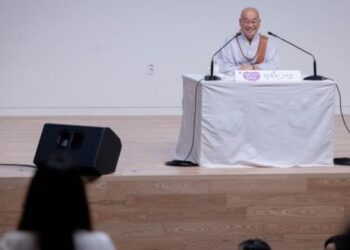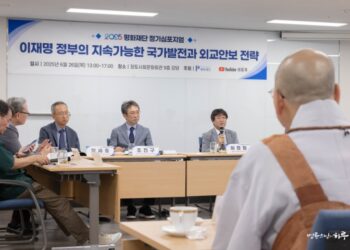Dec 12, 2024 – Third Day in Mindanao, Philippines: Inauguration of Schools for Children with Disabilities in Maramag, Quezon, and Damulog
Today marks the third day of our visit to Mindanao, Philippines. JTS is committed to building schools for children with disabilities in each municipality across Mindanao and has been constructing these schools annually. Today, we held inauguration ceremonies for three new schools for children with disabilities in the municipalities of Maramag, Quezon, and Damulog.
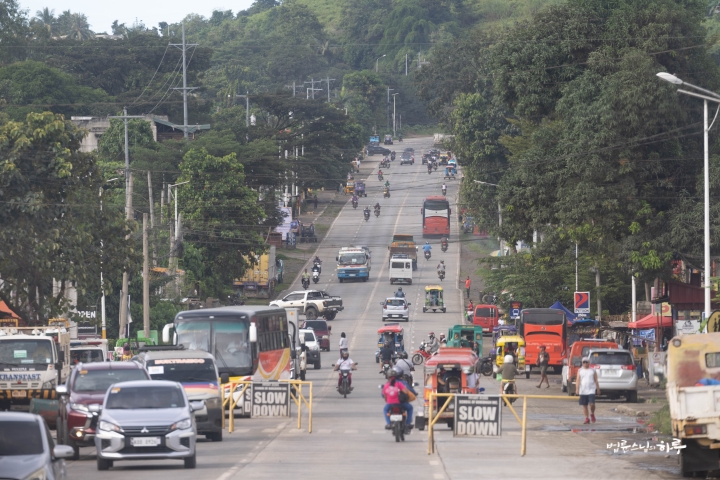
Sunim and the JTS delegation departed from their accommodation at 8 AM and headed to Maramag. After a 50-minute drive, they arrived at Maramag Central Elementary School at 8:50 AM. Upon arriving, they were warmly greeted by students and teachers of the school.
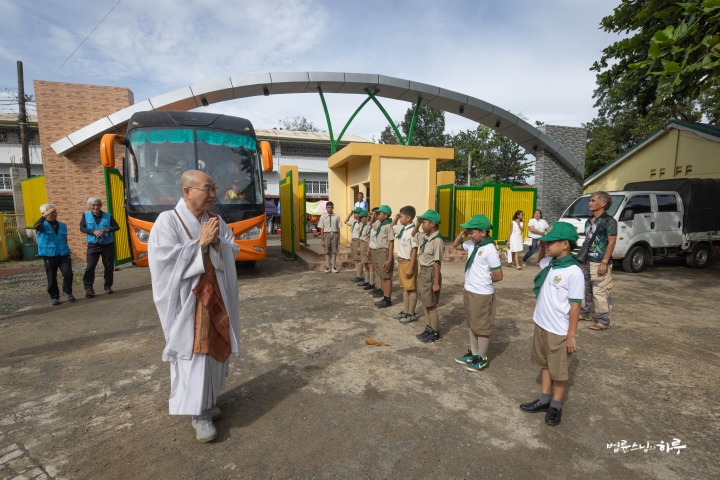
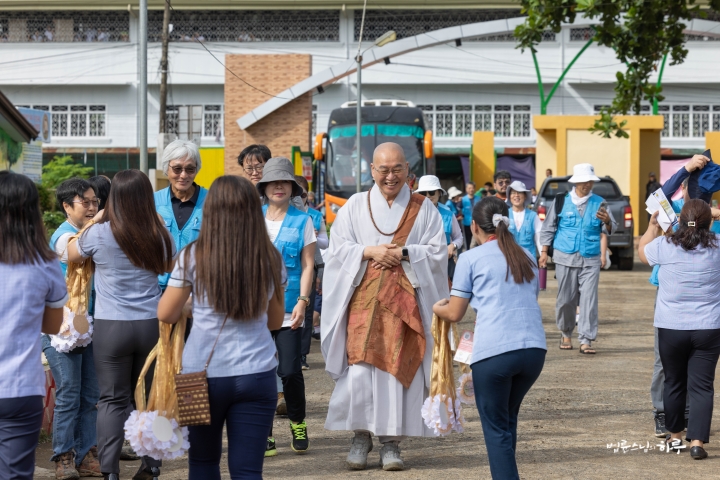
A brass band welcomed the JTS delegation with lively music.
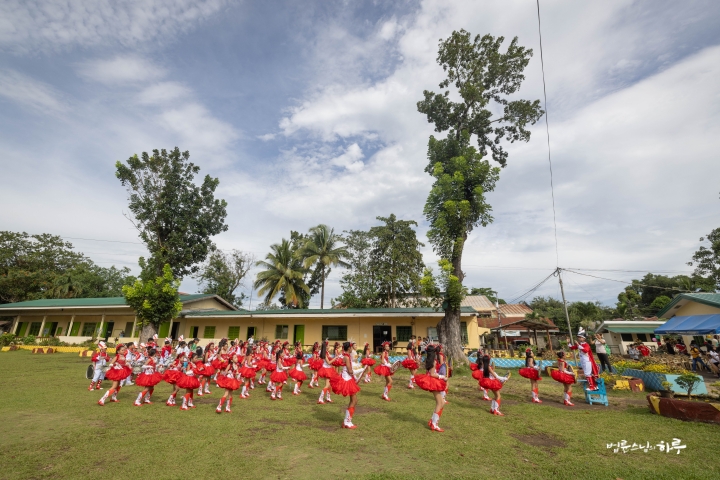

As they passed the main building, accompanied by lively music, the newly built Special Education (SPED) school for children with disabilities came into view right next to it. The special school was built adjacent to the main building to allow children with disabilities to easily mingle with regular students.
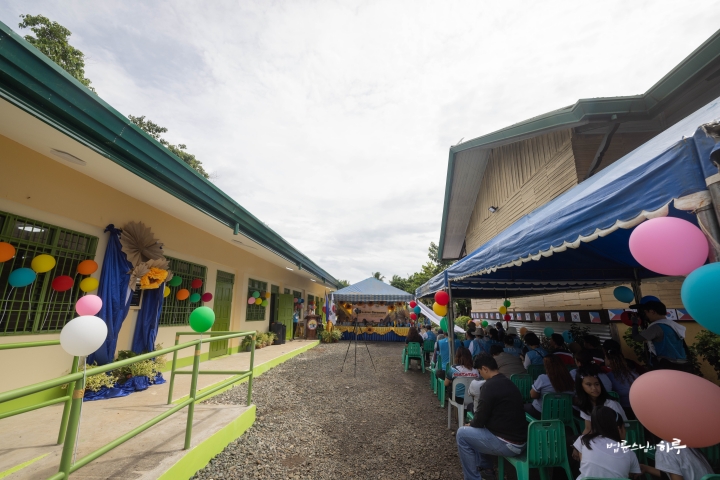
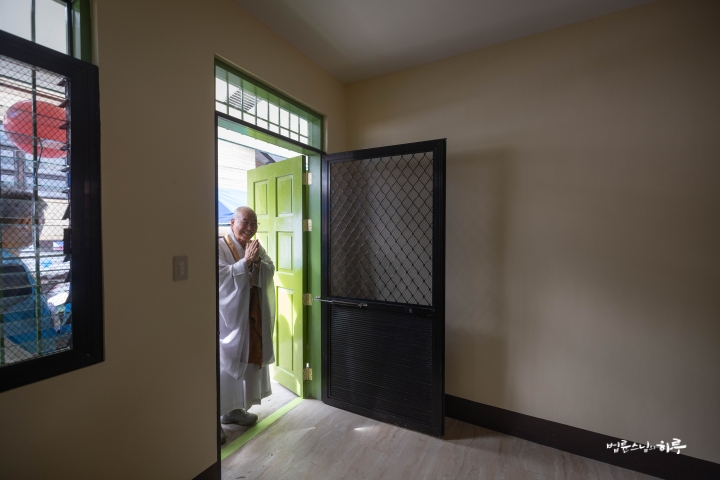
After touring the newly built classrooms, the ceremony began at 9 AM. The attending dignitaries were the first to come forward, cutting the ribbon and unveiling the plaque..
“One, two, three”
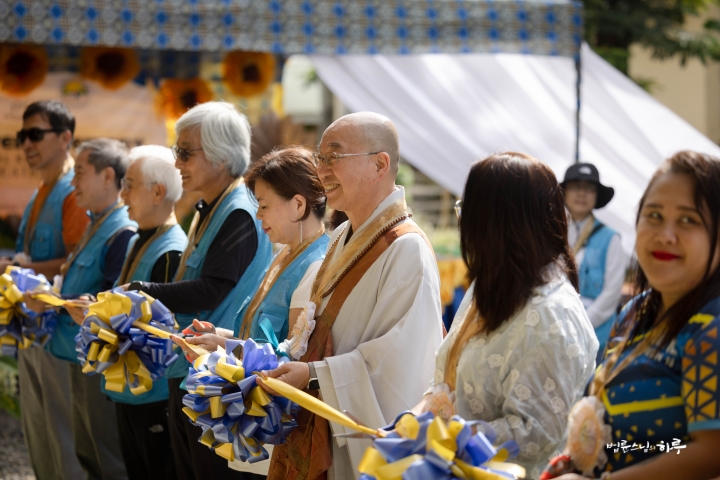
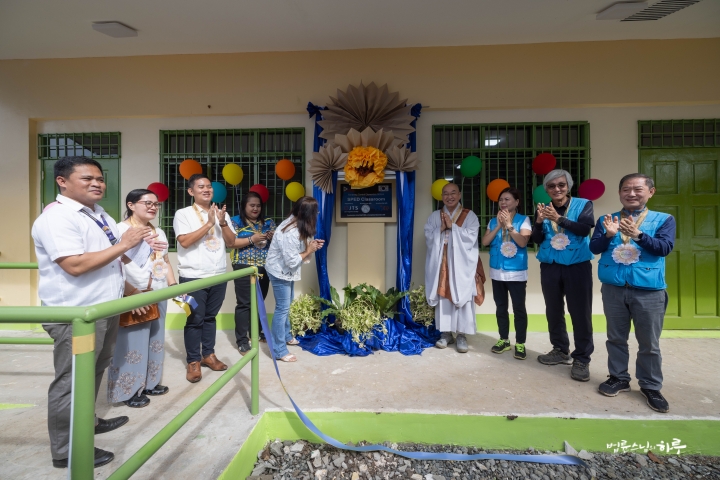
Finally, a special school for children with disabilities has been established in Maramag. Next, a catholic priest conducted a blessing ceremony by sprinkling holy water around the classrooms. Sunim and the JTS dignitaries followed the priest and joined in the blessing.
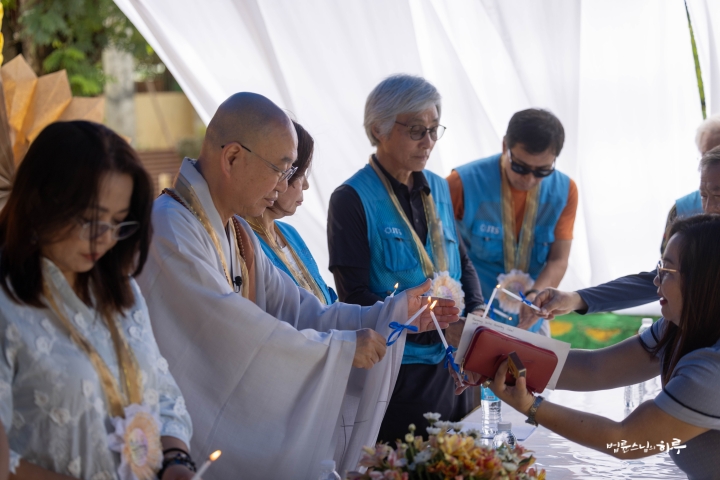
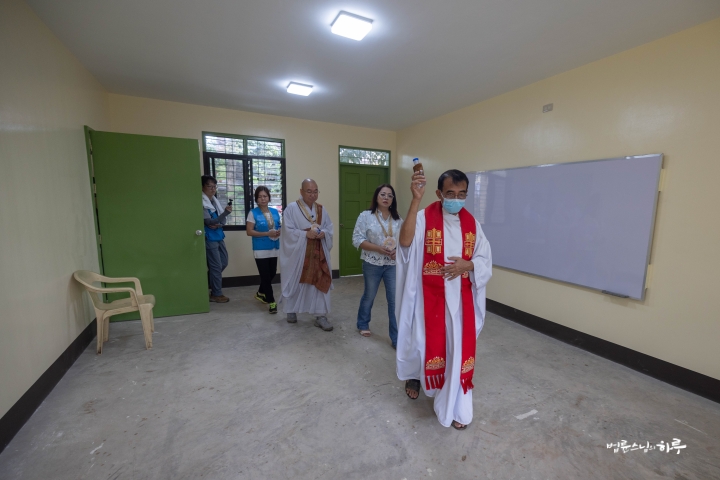
Then, students came forward to sing a hymn, followed by the national anthems of the Philippines and South Korea.
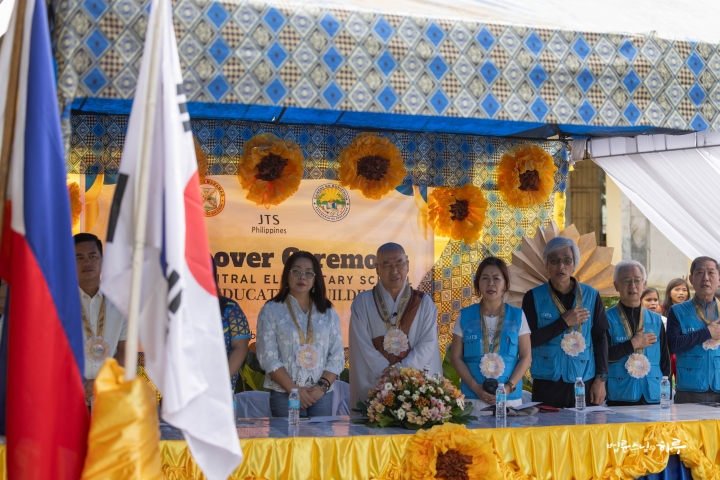
Next, the principal gave a congratulatory speech.
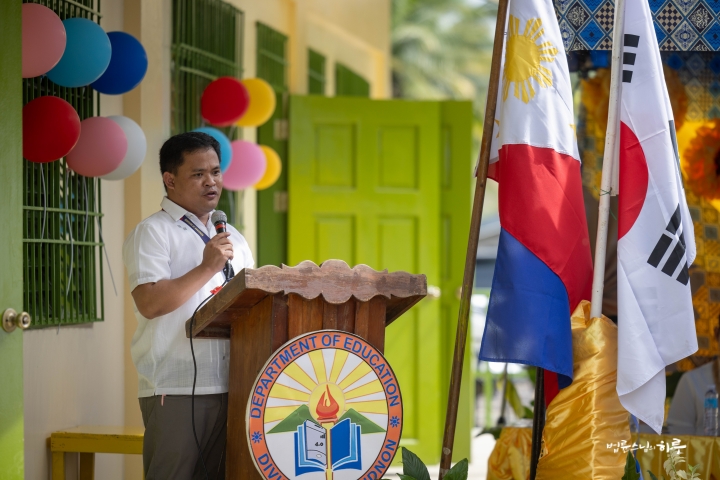
“This building is not just a structure. It is a monument symbolizing hope, opportunity, and a brighter future for our students who need special education.”
Noh Jae-guk, the representative of JTS Philippines, gave a progress report.
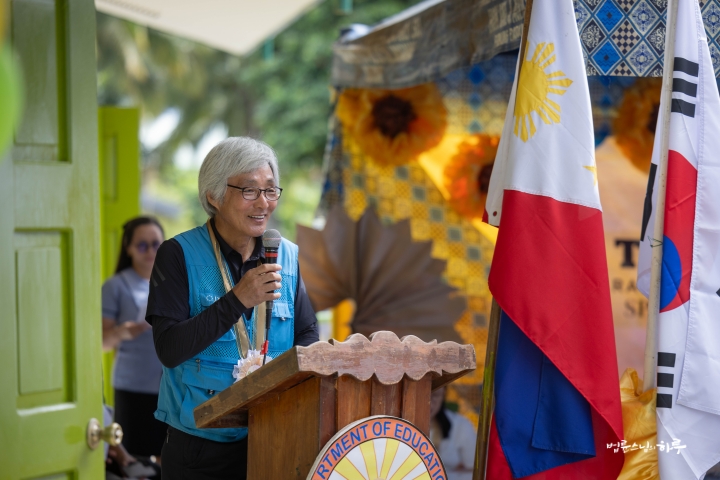
“Currently, there are 64 SPED students enrolled at Maramag Central Elementary School, but without a dedicated space, they have been studying in borrowed classrooms from regular classes. Maramag Central Elementary School, the largest elementary school in Bukidnon, has 4,700 students and 128 teachers. With regular classrooms already in short supply, the lack of classrooms for students with disabilities posed a significant challenge for teachers, and students were unable to receive education tailored to their special needs. They had been using two regular classrooms divided into four sections with partitions, and the space was insufficient for the number of students. Now, students will be able to receive special education to overcome their individual disabilities.
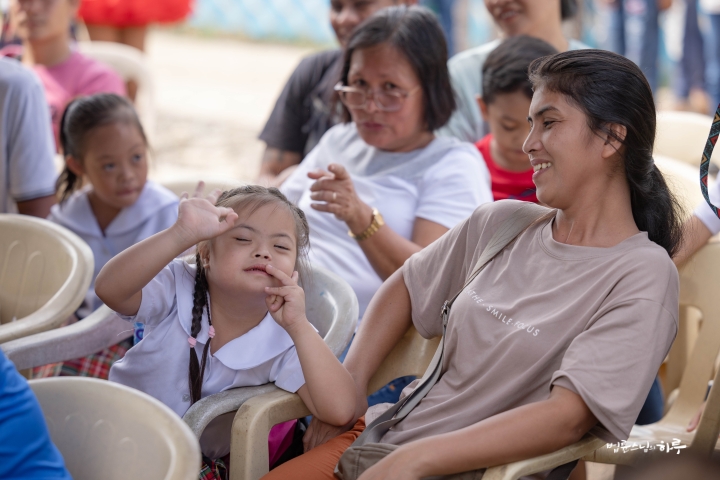
The construction was not without its challenges. The Maramag area already had poor water conditions, and during the dry season, water shortages occurred, requiring the construction company to transport water from nearby rivers using personal vehicles. Additionally, delays in material delivery from hardware suppliers slowed down the work. However, despite these issues, all parties involved cooperated to find solutions. The construction company provided their own vehicles to transport materials, and with careful inspection and management by JTS and the municipal office, the project continued without interruption. JTS volunteers made several site visits to check the quality of construction and identify areas for improvement, ensuring smooth progress of the work.”
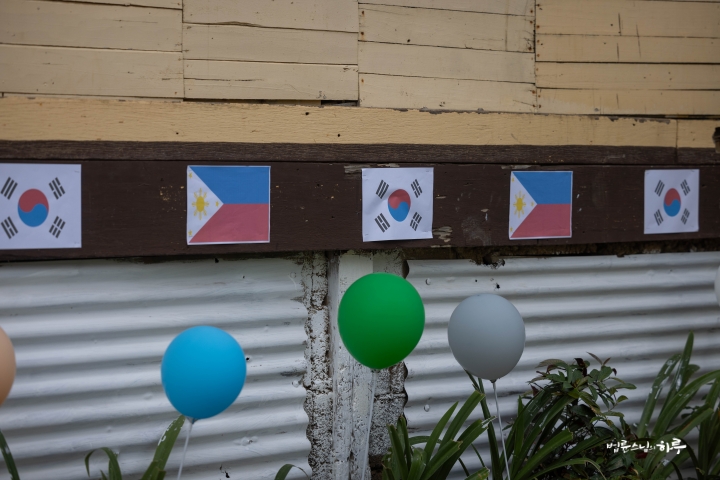
Next, Sunim presented the completion certificate to the deputy mayor, representative Park Gena handed over the keys to the deputy superintendent of education, and representative Noh Jae-guk gave clocks to the principal for each classroom.
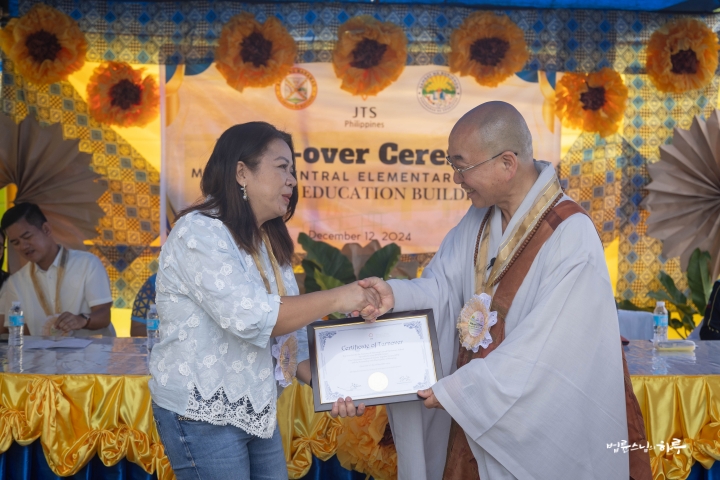
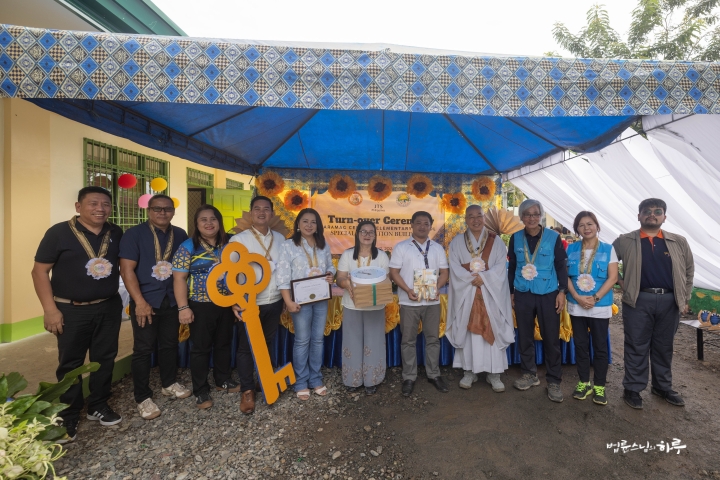
Then, Sunim came forward to give a congratulatory speech, receiving a big round of applause.
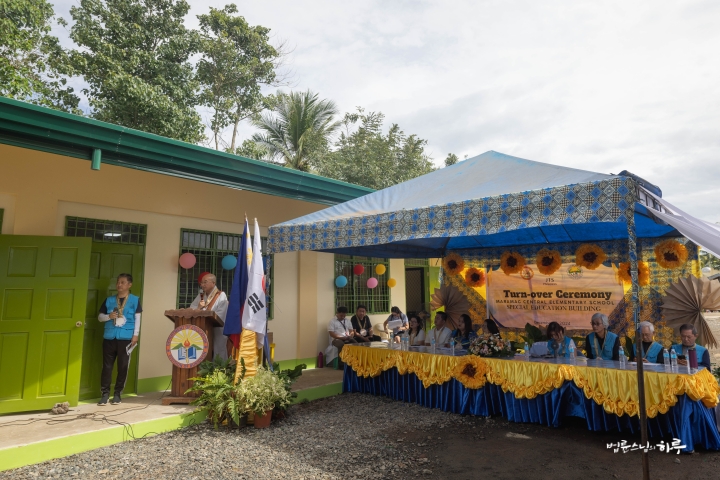
“I sincerely congratulate you on the completion of the SPED classrooms at Maramag Central Elementary School today. I would like to thank all the parents, students, and distinguished guests who are present, and I would also like to take this opportunity to express my gratitude to all those who have put in a great deal of effort to build this school.
In the past, there was discrimination between men and women. Educational opportunities were mainly given to men, while women were denied such opportunities. There was a class system where people of higher status received education, but those of lower status did not. Similarly, educational opportunities were given to people without disabilities, but children with disabilities were denied these opportunities.
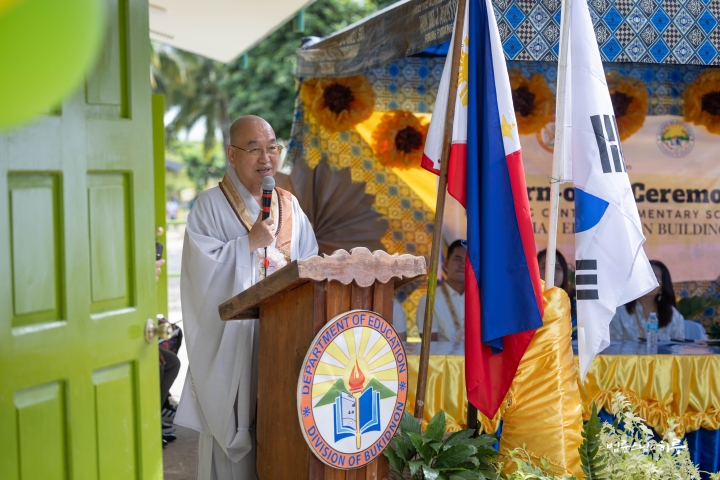
People who lacked educational opportunities were often viewed as inferior in social activities. However, in today’s democratic era, we have reached a time where all individuals are considered equal, regardless of gender differences, class distinctions, or the presence of disabilities. As women gained access to education, they demonstrated abilities comparable to men. Nevertheless, children with disabilities still lack sufficient opportunities for specialized education tailored to their needs. Visual or hearing impairments are not signs of inferiority but merely inconveniences in daily life. With appropriate special education, these individuals can lead everyday lives just like anyone else. Through Braille education for the visually impaired and sign language instruction for the hearing impaired, they are increasingly able to live normal daily lives.
Currently, Mindanao faces a shortage of educational funding, resulting in insufficient classrooms even for general students. Consequently, children with various disabilities had to study together in a single classroom, making it challenging to provide specialized education suited to their individual needs. To offer tailored special education for each type of disability, multiple classrooms and specially trained teachers are necessary. JTS adheres to the principle that all children born into this world should receive timely education. Therefore, in collaboration with the local government, JTS has undertaken the construction of classrooms capable of providing specialized education appropriate for each child with disabilities.
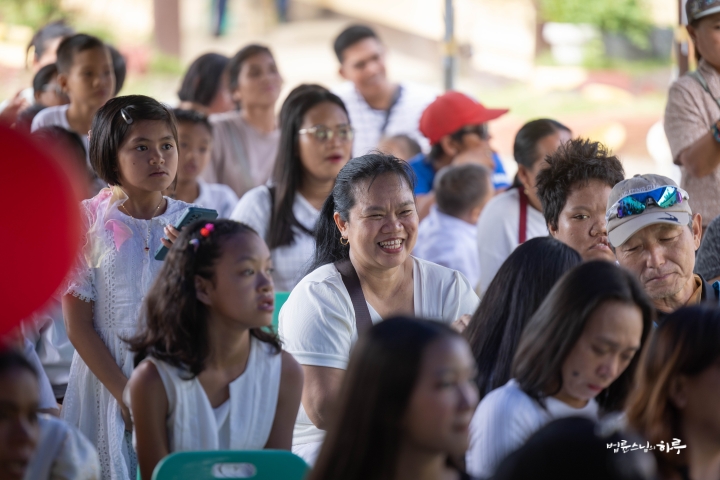
Today, the Philippine government is making significant efforts to provide educational opportunities even to minority groups. They are actively implementing policies to ensure that education is accessible to indigenous children in mountainous areas and children with disabilities. While it’s not possible to create special education classrooms in every school, at least the central elementary schools in each district should have teachers and facilities for special education. We request that the Department of Education produce more specialized teachers for various special needs. We also hope that parents will view their child’s disability not as an unfortunate event, but as a gift from God, and nurture their children to grow up without feeling inferior. If we care for and educate these children with love, they will grow and live just like other children.
We understand that it’s very difficult and challenging for parents. However, if we approach this task not as a burden but with joy, you will receive ample joy in return. Just as God bestows unconditional love upon us, we too must extend unconditional love to these children. Lastly, I deeply appreciate the hard work of the special education teachers. I hope that the completion of this school today marks the beginning of providing adequate education for children with disabilities.
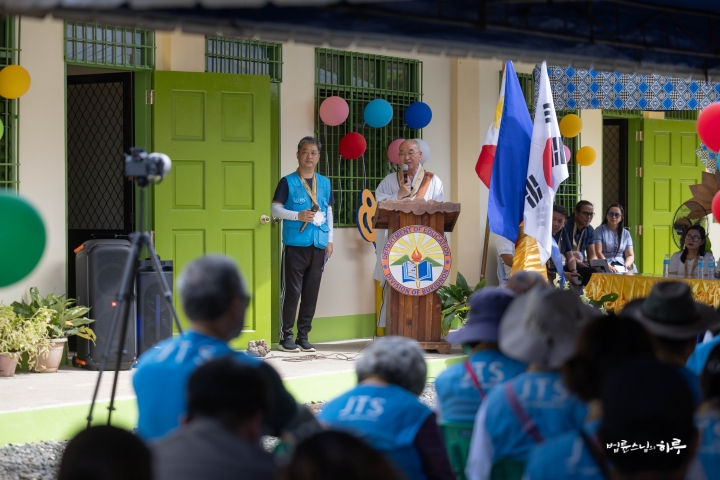
Parents and teachers all cheered loudly, clapping their hands with joy.
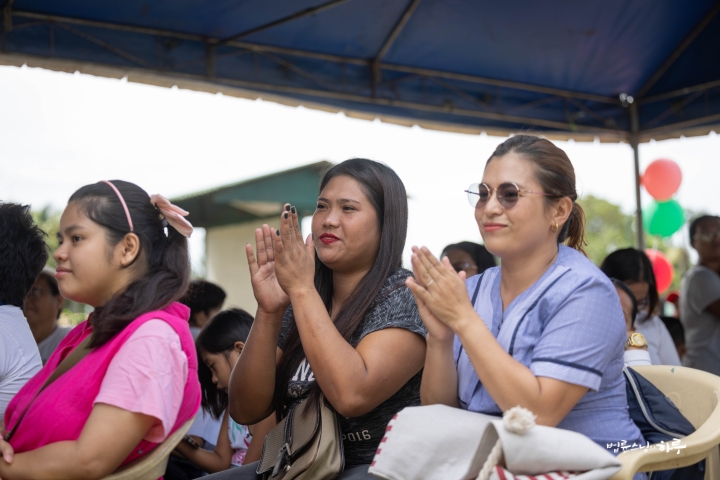
After listening to Sunim’s congratulatory speech, many local officials gave their responses. The deputy county governor and deputy superintendent of education came forward in turn to express their gratitude.
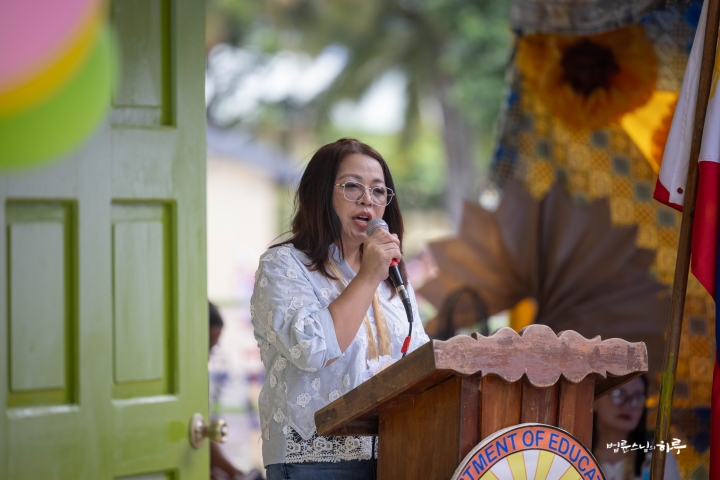
The deputy county governor emphasized that this building is more than just a facility, but a symbol of love, compassion, and sharing. He expressed deep gratitude for the dedication of JTS and Korean donors. He mentioned that the love and compassion taught by Sunim made the meaning of this building even more special, and that this sharing would bring great hope to students with disabilities and the local community, deepening the friendship between the two countries.
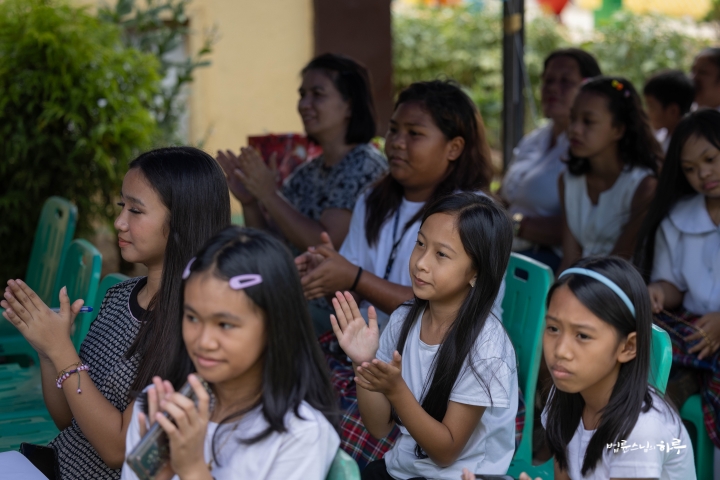
Then, a plaque of appreciation was presented to the person who had worked the hardest, and everyone went to the school’s front yard for a commemorative tree planting.
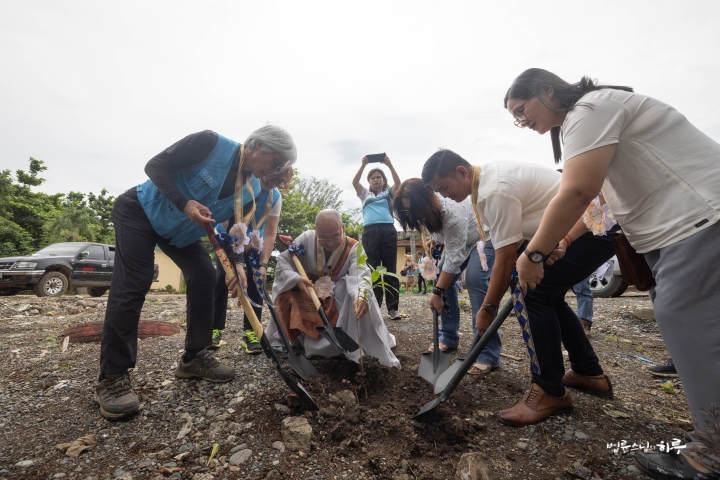
Finally, everyone took a group photo together. The children shouted the name of their village energetically.
“Maramag!”
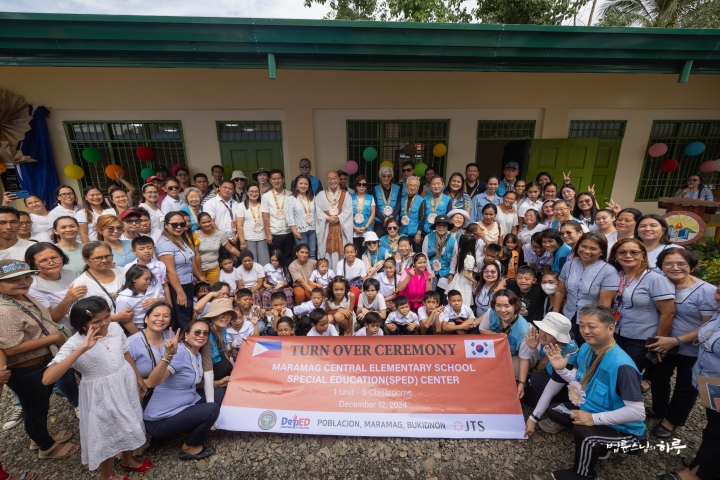
After the photo session, everyone shared the food prepared with care by the teachers and parents. As it was one student’s birthday, everyone sang a birthday song together before the meal.
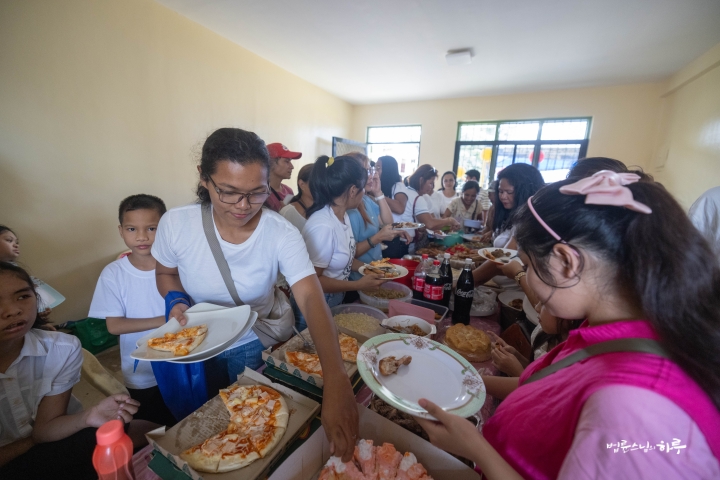
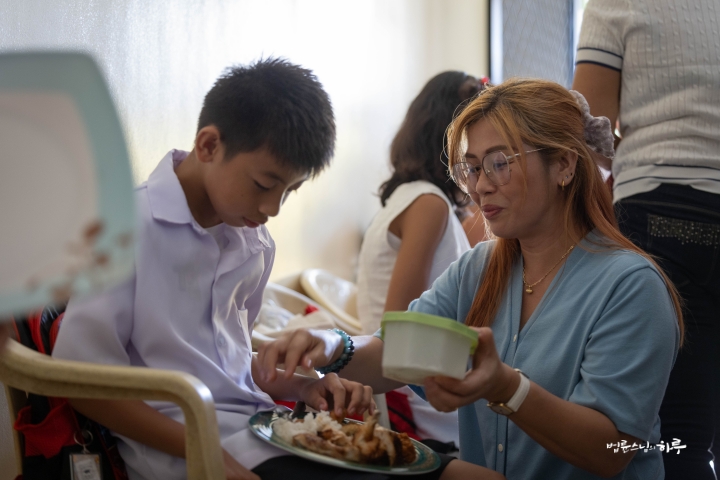
After the refreshments, Sunim greeted the teachers and students before boarding the bus. The students followed to the front of the bus, shouting “Bye-bye!”
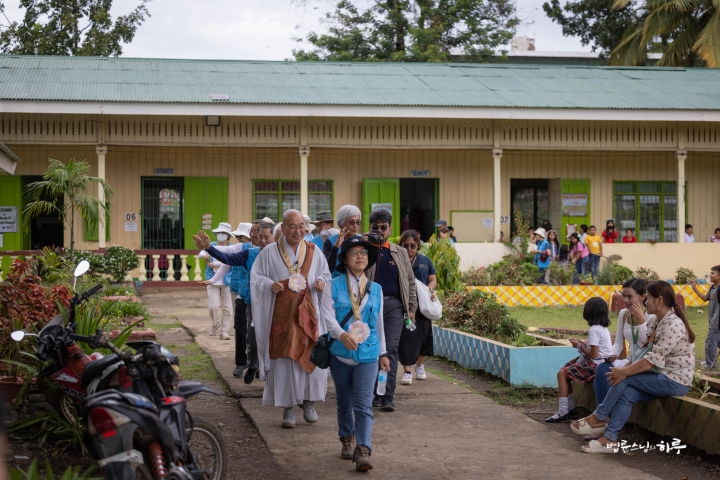
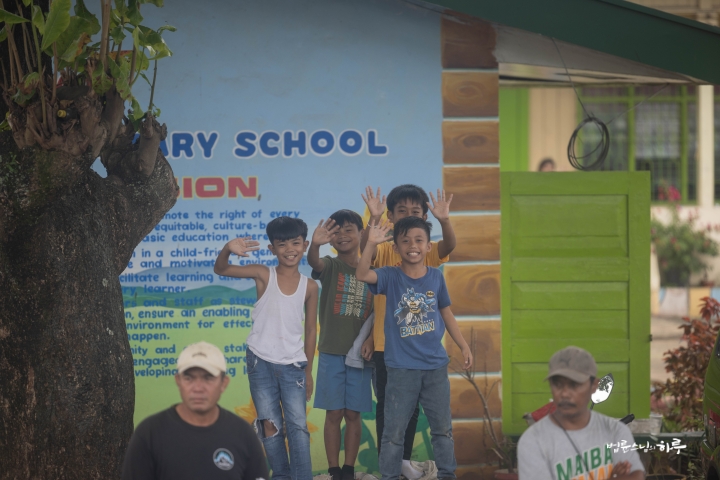
After a 30-minute bus ride, Sunim arrived at Quezon Central Elementary School at noon. The building was decorated with hand-drawn Korean flags by the children. Even after the JTS delegation arrived, the children continued to draw Korean flags.
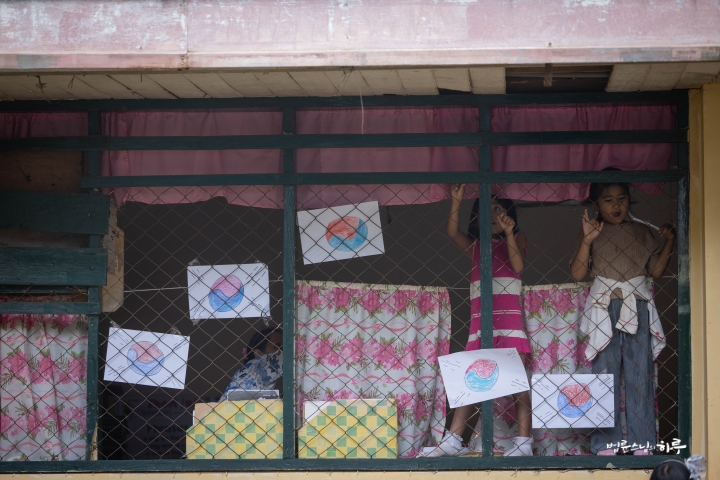
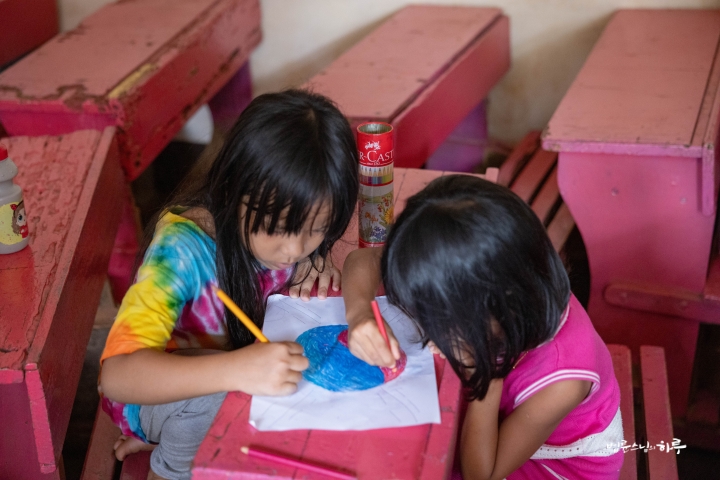
The Quezon Special Education School was also built right next to the Central Elementary School. After touring the school, Sunim immediately proceeded with the ribbon-cutting ceremony.
“One, two, three!”
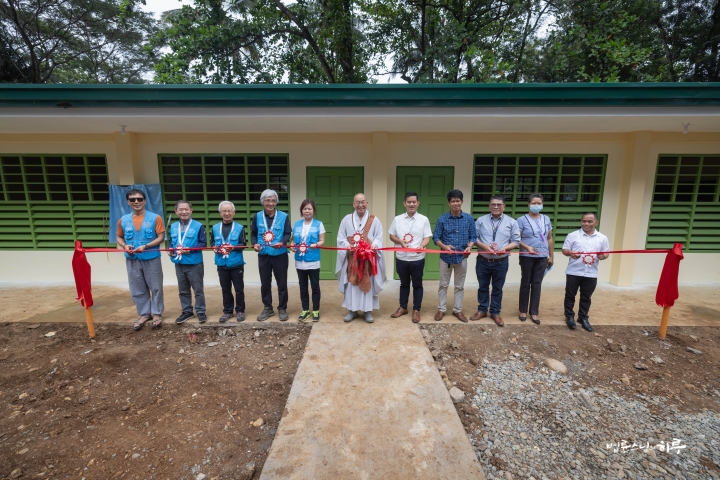
After the unveiling ceremony, a commemorative photo was taken.
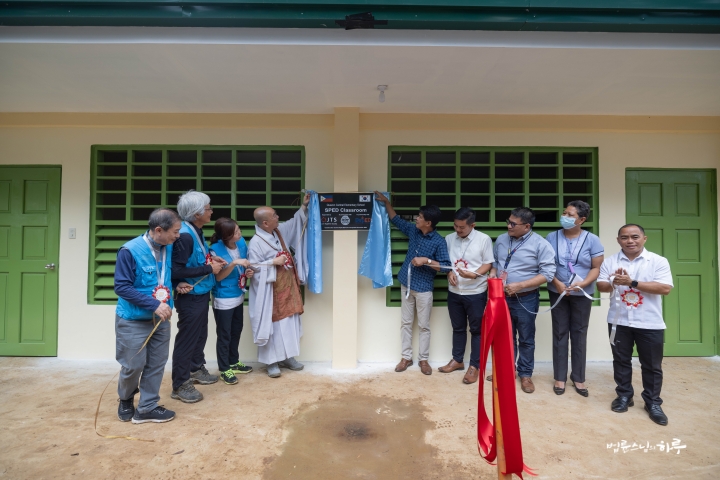
Everyone lit candles and followed the priest around the classroom for a blessing ceremony. They prayed that the students with disabilities would maintain their dignity, just as the candles remained lit.
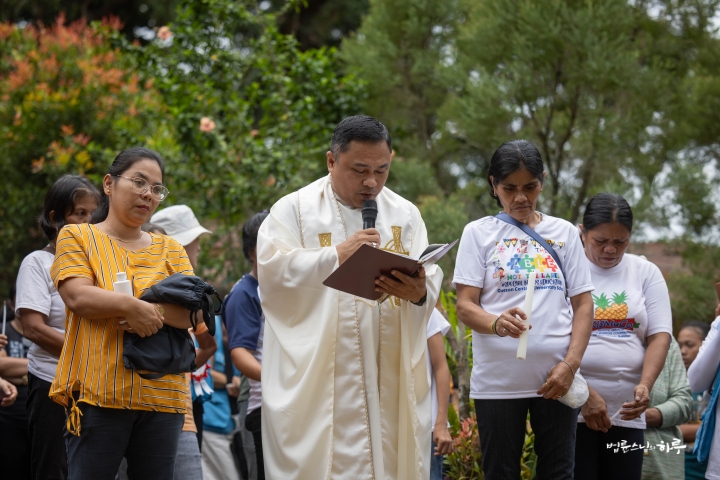
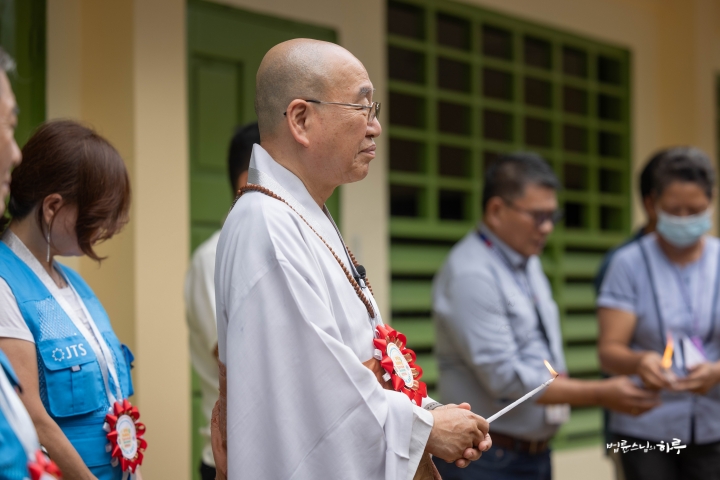
After the blessing, everyone moved to the event hall and sang both the Philippine and Korean national anthems. As the Korean anthem played, everyone placed their hands on their hearts.
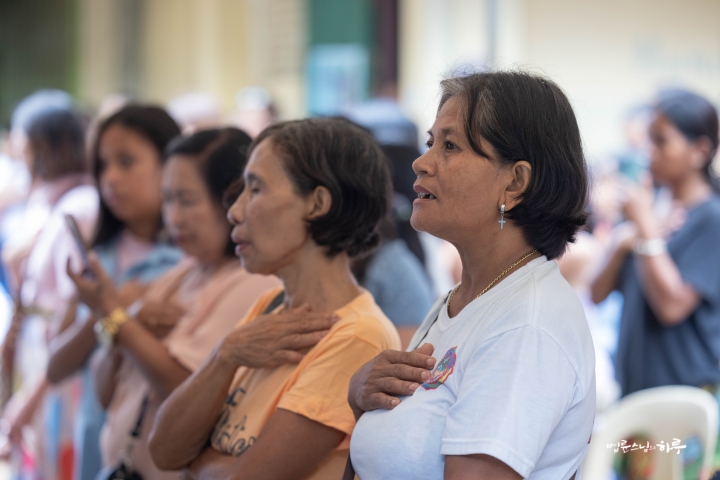
Following the principal’s welcome speech, Roh Jae-guk, the representative of JTS Philippines, gave a progress report.
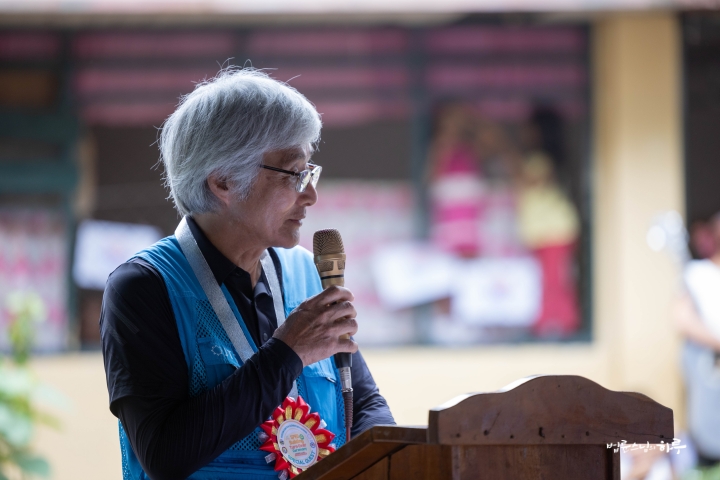
“The special school within Quezon Central Elementary School has a total of 64 students cared for by five teachers. With many students and insufficient classrooms, they had been borrowing classrooms from the regular school. However, with the completion of this school, 21 students with intellectual disabilities, 14 with learning disabilities, and 16 with autism spectrum disorders can now receive tailored education according to their conditions.”
Next, the students with disabilities presented a performance they had prepared. Everyone applauded warmly as they watched the students dance freely to lively music.
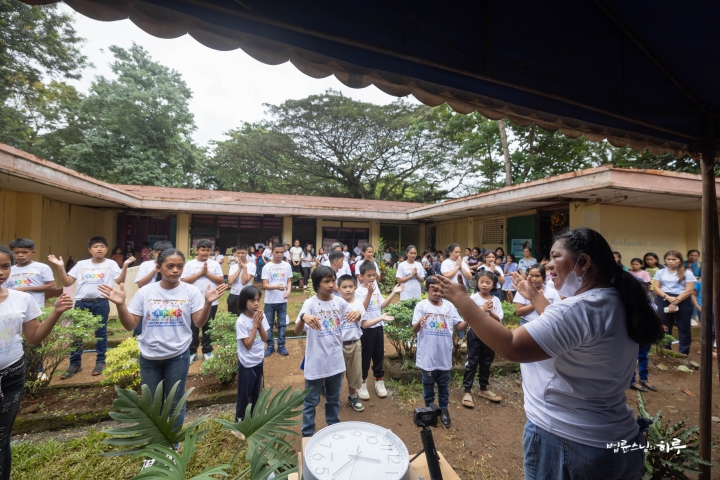
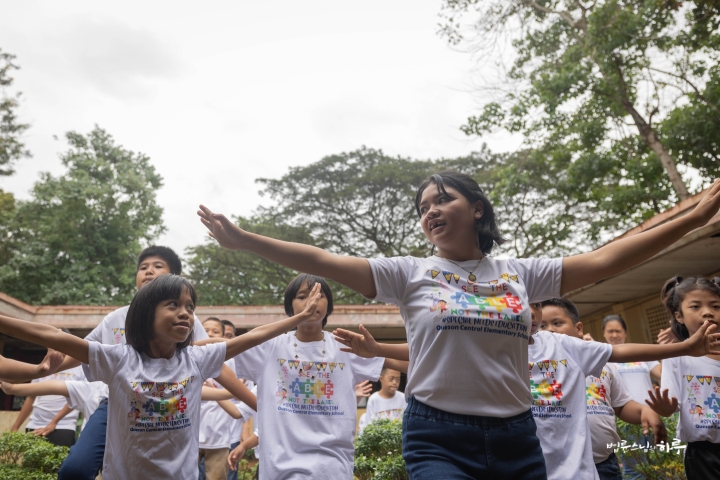
The Central Elementary School students also prepared a congratulatory performance. They sang beautiful songs accompanied by guitar and melodeon ensemble.
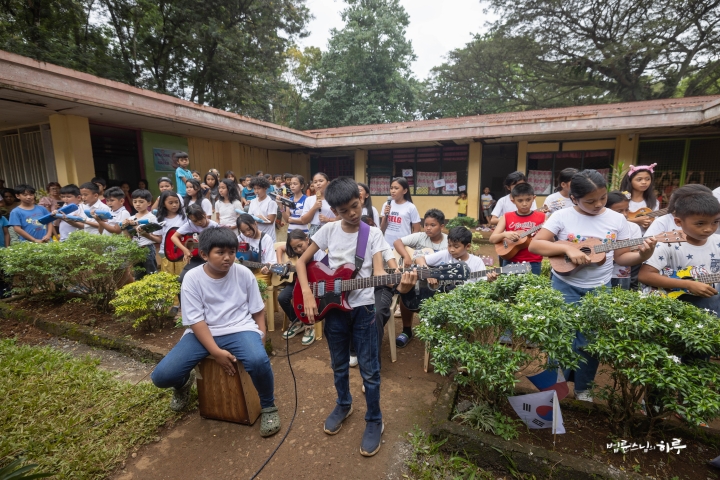
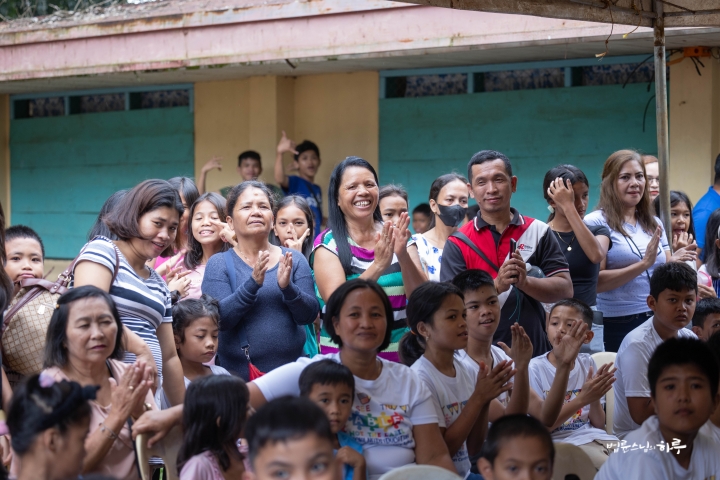
In a warm atmosphere, the completion certificate, keys, and a clock were presented, and Sunim gave a congratulatory speech.
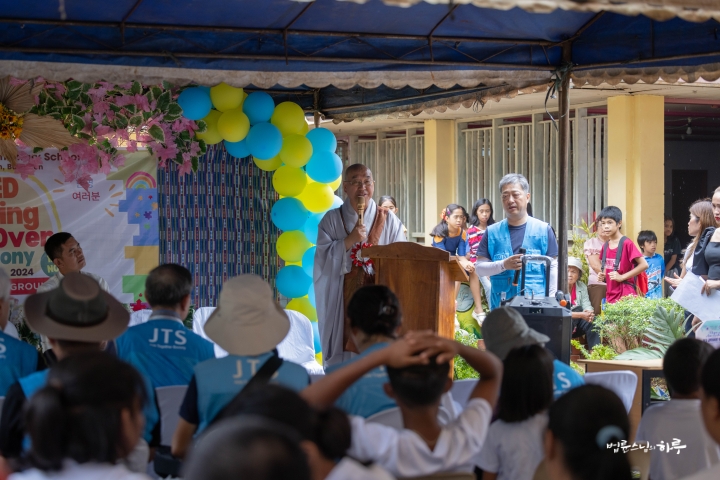
“I am very pleased to meet you all. I sincerely congratulate you on the completion of the special education classrooms at Quezon City Central Elementary School today. This classroom completion was made possible thanks to the efforts and dedication of many people. I am especially grateful for the dedication of the Mayor of Quezon City and various technical experts. Korean JTS provided financial support, while JTS Philippines supervised the construction. The Department of Education has also prepared excellent teachers to guide the children as special school teachers. I sincerely thank everyone who cooperated for the education of children with disabilities. I also deeply appreciate the distinguished guests, parents, and students who attended today’s completion ceremony.
I would like to mention two things here today. First, all people are equal. Whether our skin is dark or light, regardless of gender, whether we have disabilities or not, we are all equal. Just like these rubber balloons hanging here, which only differ in color but none is superior or inferior to the others. In the past, there were views that distinguished people based on these differences and ranked them high or low, but now we know that everyone is just different but equal.
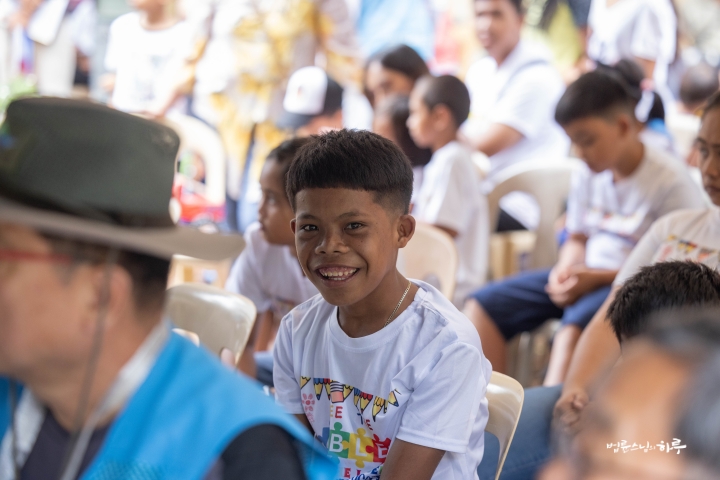
Second, educational opportunities should be provided equally to all people. Students with disabilities need special education tailored to their needs. However, we have not been able to provide adequate educational opportunities for students with disabilities. While it’s not a problem to have 30 students in a regular class, if there is even one student with visual impairment, a separate class should be organized for that child.
In the past, we often gave up on providing appropriate education for a small number of students with disabilities. However, now that we have established these special classrooms, we can provide educational opportunities tailored to each student’s needs. Of course, the completion of the classroom doesn’t solve all problems. Special education teachers are needed for students with disabilities, and appropriate educational equipment must be provided. Additionally, support and effort from not only parents but also the entire community are necessary to ensure that children with disabilities can receive education.
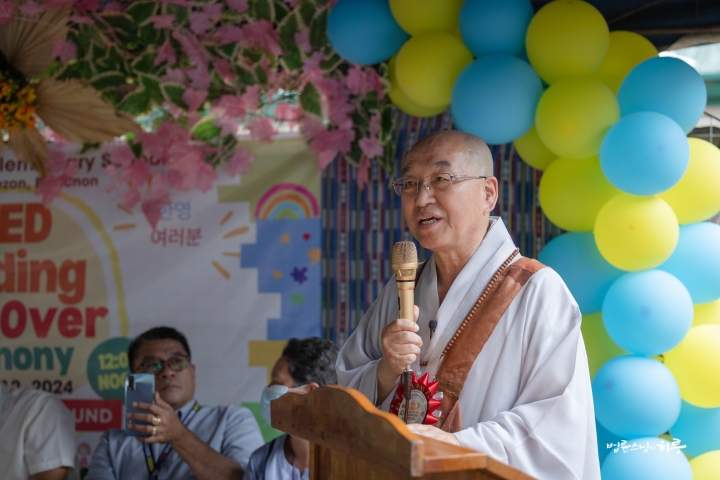
I hope that today’s completion of this special education classroom will provide better educational opportunities for children with disabilities. Disability means inconvenience, not inferiority. To address this challenge, more support and effort are needed than for children without disabilities. I know it must be challenging for parents, but please don’t give up. I ask that you give special attention and effort to ensure your beloved children grow up healthy.
A moment ago, we directly confirmed that children with disabilities can accomplish many things if they receive proper education and training. However, this is difficult to achieve with the efforts of just a few people. We all need to come together and work as one. JTS operates under the principle that ‘all children have the right to receive education at the appropriate time.’ If you request necessary assistance, we will be happy to support you at any time.
Once again, I sincerely congratulate you on the completion of the special education classroom and express my deepest gratitude to all of you.
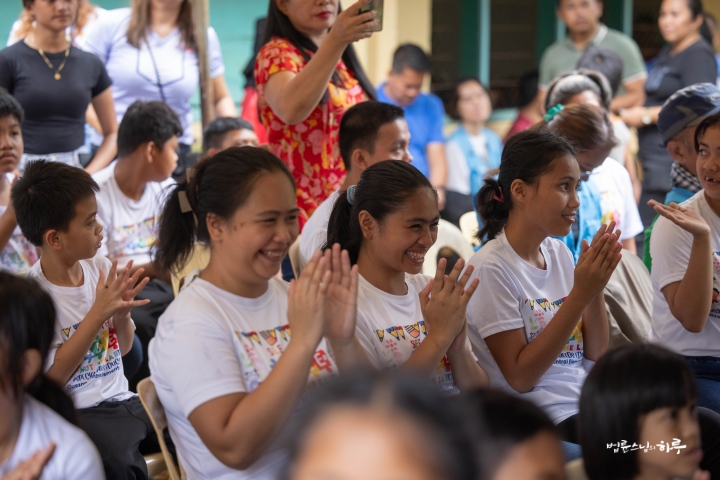
Subsequently, local government officials and representatives from the education department also took turns visiting. The mayor of Quezon arrived late and expressed his gratitude.
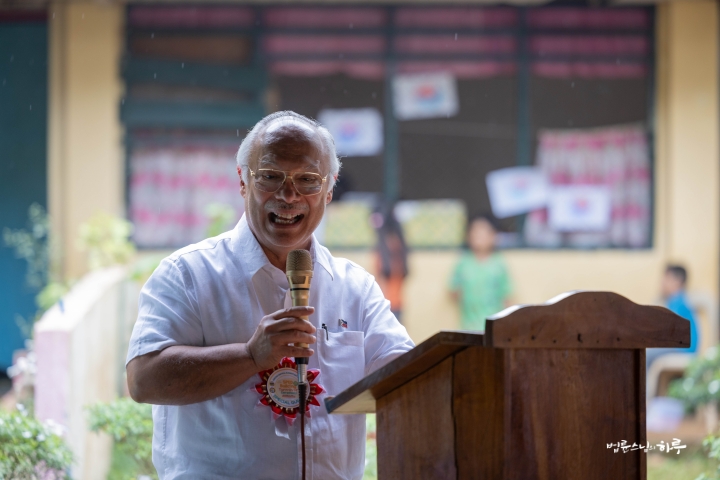
“JTS has dedicated itself to helping us nurture the potential of these children. Now, we can provide a better learning environment for 64 special education students.
I believe this project is not just an end, but a beginning. We must continuously strive to ensure that the students learning here can fully develop their potential in an improved environment. This building is not just a structure, but a symbol of hope and possibility.
I would like to make two promises here. First, the local government will continue this cooperation and do its best to provide a better educational environment for our local students. Second, I promise to work with the government, local community, and international organizations to ensure that educational opportunities are provided equally to all children.”
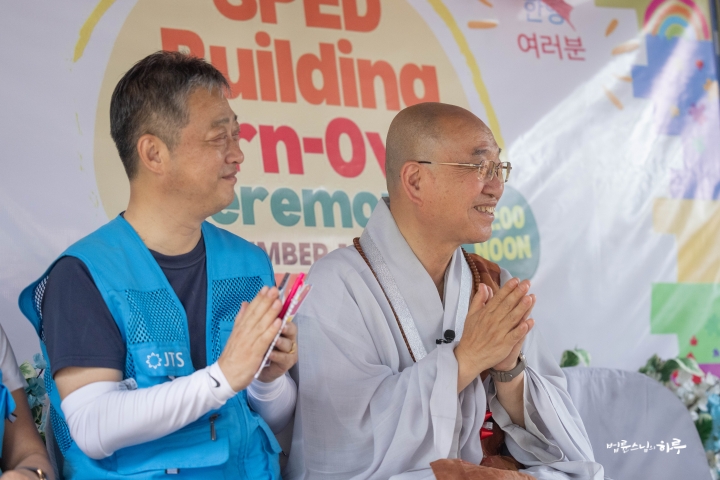
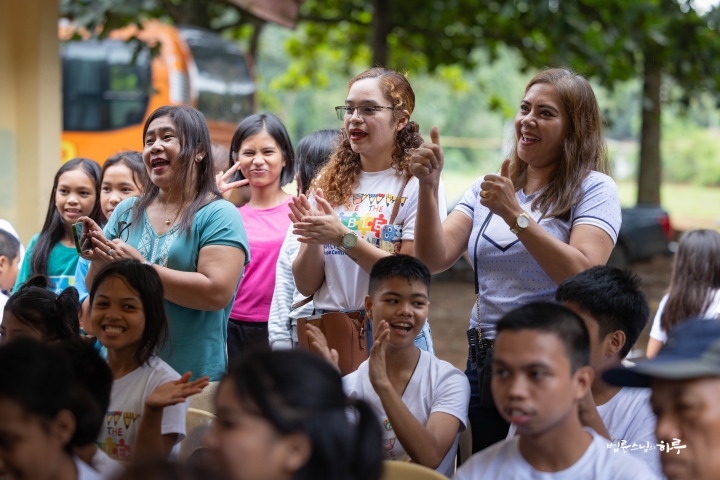
Finally, a commemorative tree planting was held, followed by a group photo session.
“Quezon!”
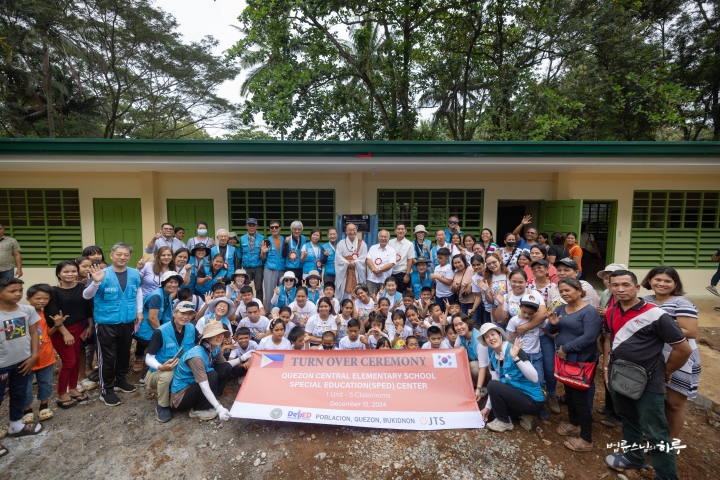
After the photo session, Sunim had a conversation with the mayor. In March, when Sunim had met him, the mayor had pointedly asked why JTS was building schools for indigenous people and those with disabilities, and what benefit this brought to JTS. Sunim smiled and asked,
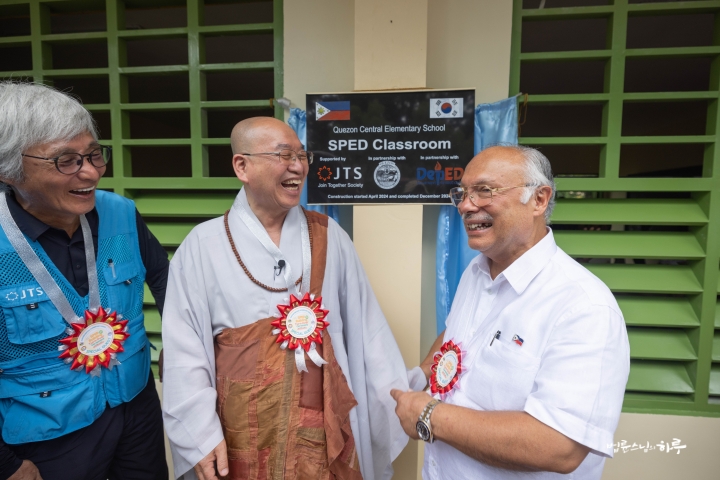
“Do you remember the question you asked then?”
“Yes, I remember. I was really curious then. Now I fully understand JTS.”
After enjoying refreshments prepared by the school, we boarded the bus again to attend the next completion ceremony. The children waved the Korean flag until the bus disappeared from sight.
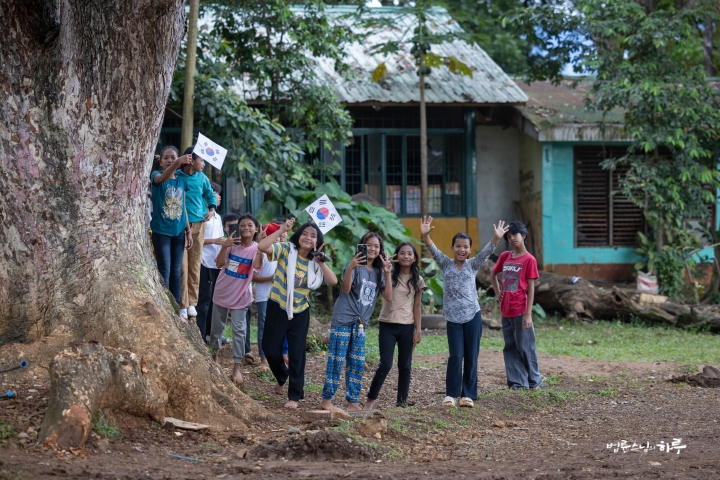
After an hour’s bus ride, we arrived at Damulog Central Elementary School. Children holding Korean and Philippine flags lined up and welcomed the JTS delegation with songs.
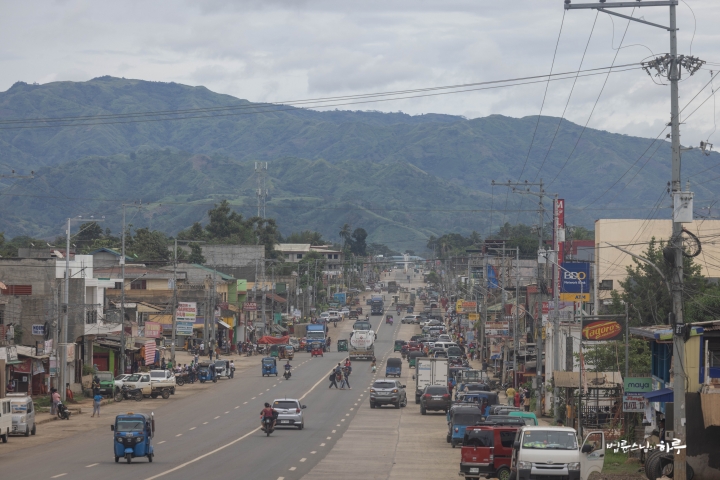
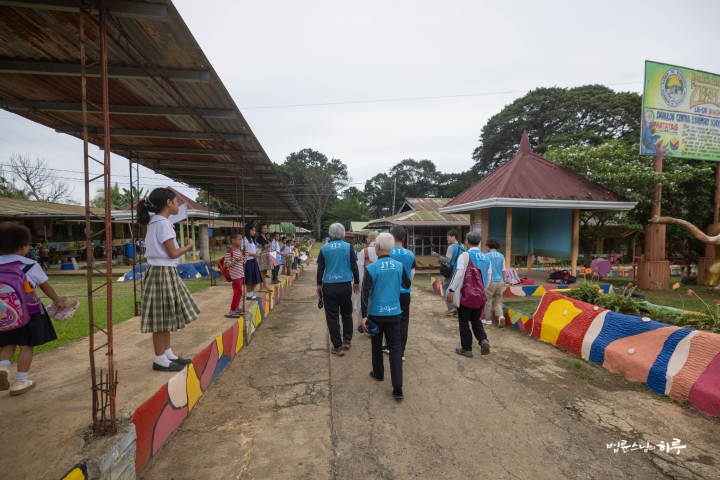
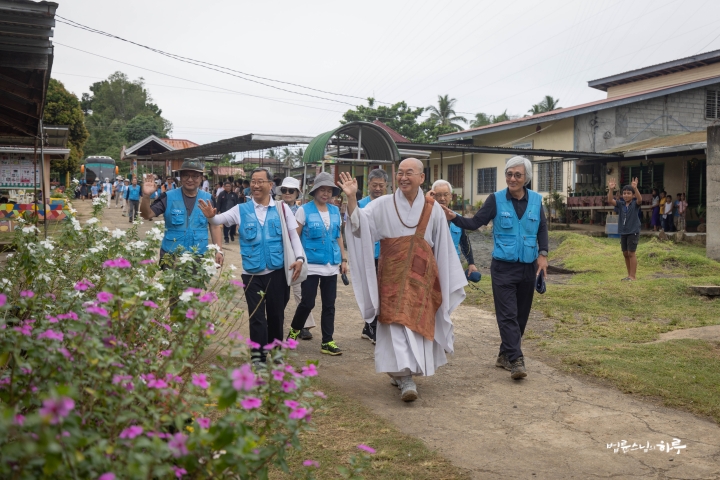
After touring the school, the completion ceremony began at 3:30 PM.
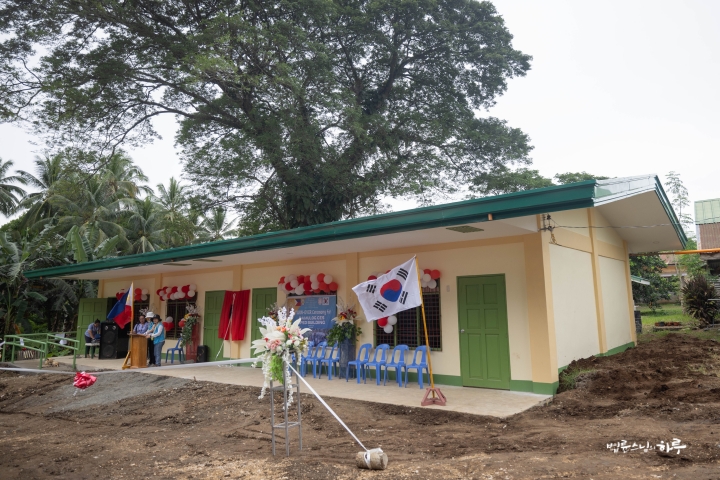
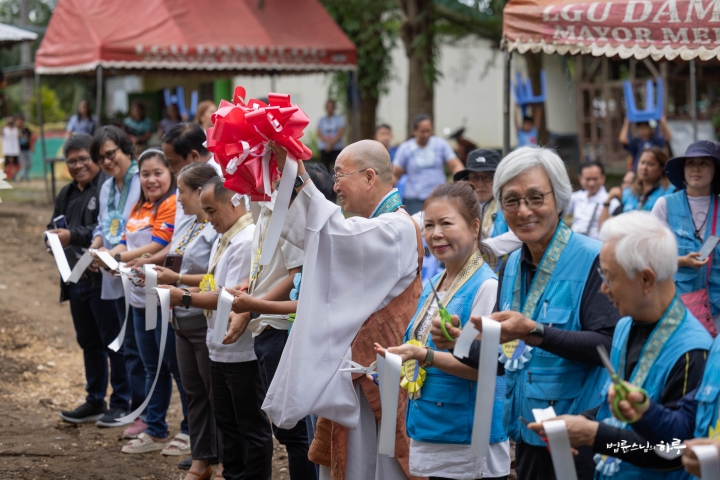
The ribbon-cutting, unveiling ceremony, national anthem, and welcome speech by the principal of Damulog Central Elementary School were followed by a progress report from JTS representative Noh Jae-guk.

“In 2023, Apolinario Rejas, the principal of Damulog Central Elementary School, approached Jessie, a local JTS activist, to inquire about how to request support for a special education (SPED) building in Damulog. Activist Jessie suggested that the principal draft a school resolution and request, and obtain a recommendation from Damulog Mayor Melino L. Buro to submit to JTS.
Subsequently, JTS visited Damulog Central Elementary School and held an urgent meeting with Principal Roger Jafra. The meeting involved detailed discussions about the request for the SPED center construction, and the proposed site was directly inspected. After reviewing the project considering Damulog’s needs, JTS confirmed the construction. During the construction process, there were several unexpected challenges. However, through close cooperation between JTS and local government officials, we were able to resolve the issues and complete the construction.”
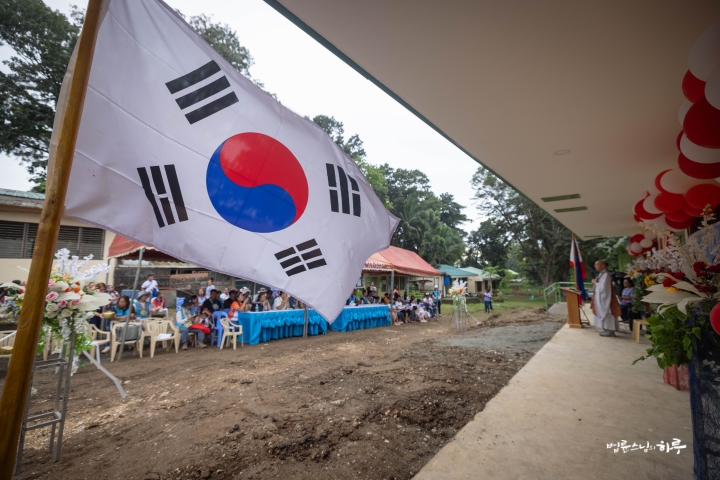
After presenting the completion certificate, keys, and a clock, Sunim gave a congratulatory speech.
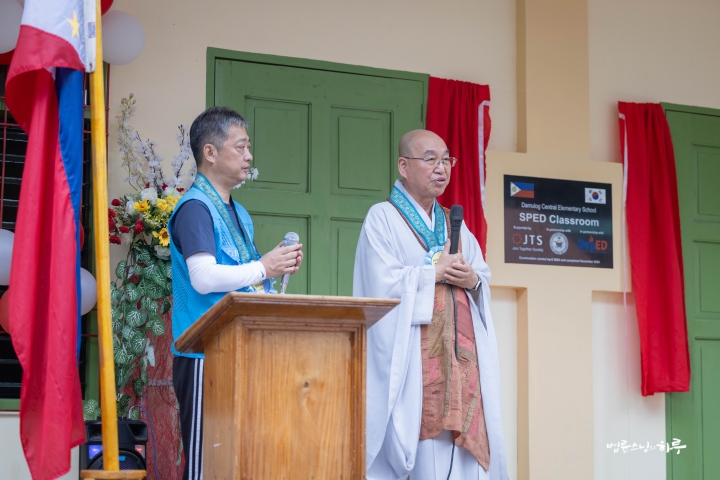
“It’s a pleasure to meet you all. I sincerely congratulate you on today’s completion ceremony of the Damulog SPED school. Damulog is a place I have visited several times to establish elementary schools in Muslim and indigenous areas. I am truly delighted that we have now been able to build a SPED school for children with disabilities.
In the past, none of us received education. Even after education began, priority was given to males, urban residents, and healthy children. As a result, women, rural children, and children with disabilities were denied educational opportunities. Now, gender equality has been achieved, allowing women to receive education, but in Mindanao, indigenous children in the mountains and children in conflict areas still do not have sufficient educational opportunities. For the past 20 years, JTS has been providing educational opportunities to children by primarily building elementary schools in indigenous and conflict areas. In the process, we learned that special education for children with disabilities in Mindanao was insufficient.
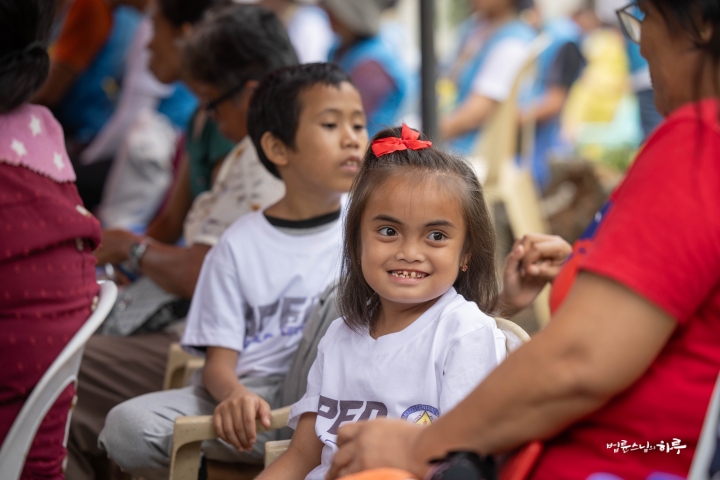
Children with disabilities face many challenges. Regular education is often insufficient for them, and they require special education teachers, facilities, and appropriate class sizes. However, due to limited education budgets, children with disabilities are often marginalized in the education system. Regardless of the environment or conditions into which they are born, every child has the right to education. I once met with a commander in the MILF region and had this conversation:
“Adults may fight among themselves, but what fault do children have? Let’s provide educational opportunities for the children. To do this, we need to ensure safety so that schools can be built and teachers can stay to teach the children.”
The commander agreed, and that’s how we were able to build schools in conflict areas. When faced with problems, instead of just saying “it’s difficult” or “it can’t be done,” we must continuously seek and implement ways to educate children. A mayor of a certain region once told me:
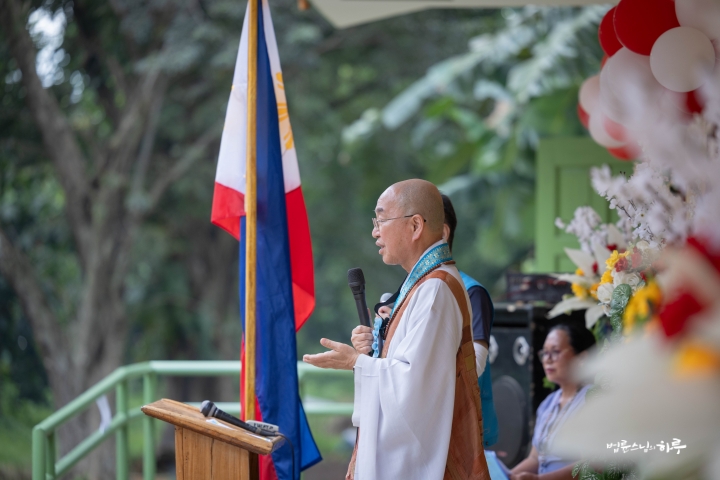
“We currently lack sufficient educational budget to provide enough classrooms even for normal children. How can we educate children in rural areas and those with disabilities? With limited funds, we need to use our finances effectively to benefit more students, making it difficult to provide educational opportunities for indigenous or disabled children.”
The mayor’s candid confession was understandable. However, even children living in rural areas should be given the opportunity to receive education, regardless of their small numbers. JTS is working together with the Philippine government to contribute, even if just a little, to their insufficient education budget.
Educating children with disabilities requires more funding, attention, effort, and teachers. Equality is not simply about dividing resources equally, but about accommodating different situations appropriately. For example, if a regular class has 30 students with one teacher, a class for children with disabilities should have 3 students with one teacher. This is true equality. Without changing this perception, children with disabilities will continue to struggle to receive education.
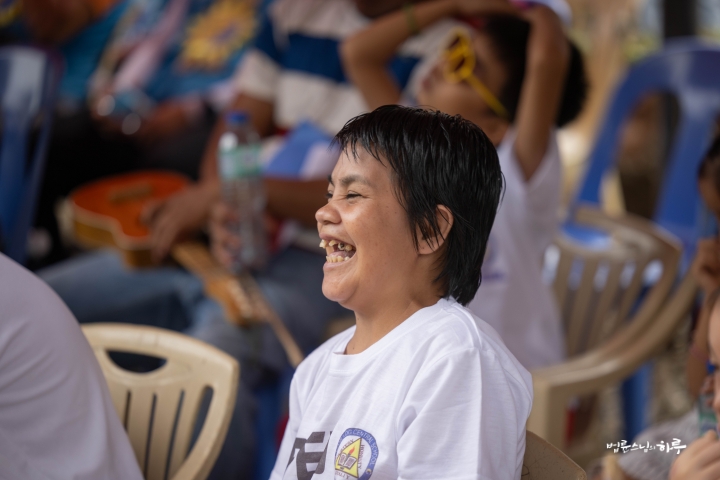
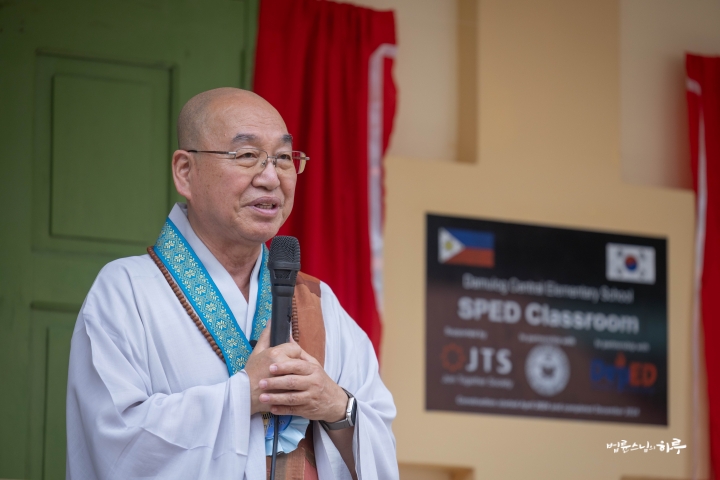
Currently, as the Philippine government is showing interest in education for indigenous people and those with disabilities, schools for these groups are gradually increasing. However, there is still a shortage of schools, so we ask for your continued interest and support. JTS also promises to cooperate and provide more assistance in the future.
Children with disabilities are not just a concern for a select few. They can be born to or develop in any of our families. If not only the government but all of us show interest and join forces, parents can find the courage to continuously care for children with disabilities.
Educating children with disabilities to a certain level requires more time and effort than for children without disabilities. The dedication of teachers who commit themselves to this task is truly commendable. I request a big round of applause for the children with disabilities, parents, and special education teachers who are here with us today. I hope this inauguration ceremony will serve as an opportunity to raise more awareness about children with disabilities. I also ask the Department of Education to consider establishing at least one school for children with disabilities in every municipality of Bukidnon Province, not just in Damulog.
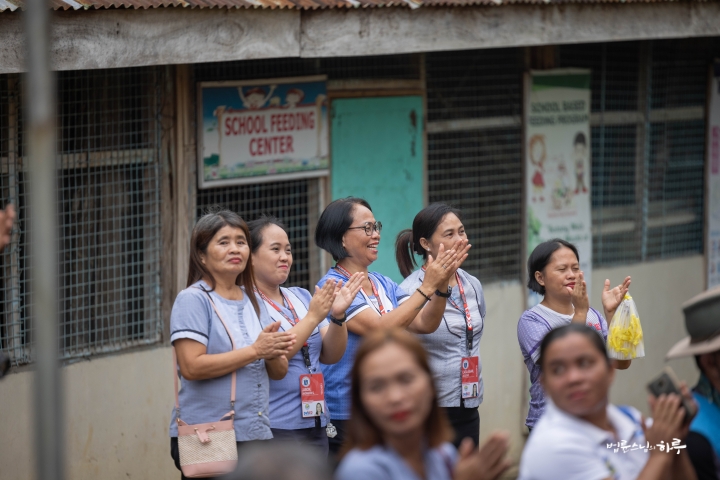
Next, the research director of the Ramon Magsaysay Award Foundation gave a congratulatory speech.
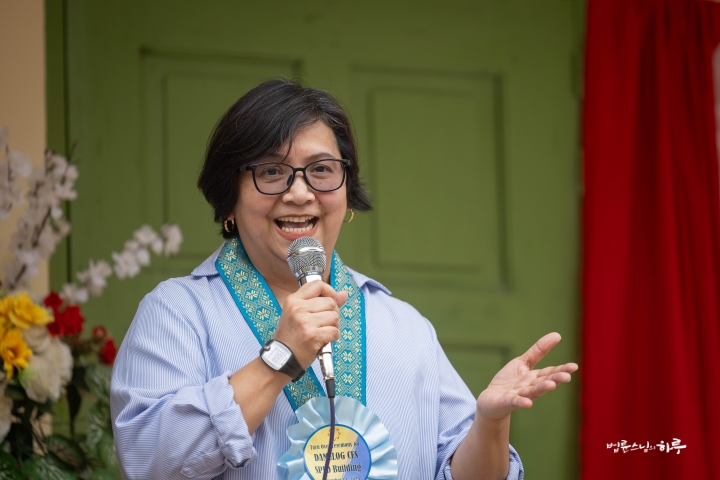
“Venerable Pomnyun Sunim, who received the Ramon Magsaysay Award in 2002, is a figure who has led social change through peace, human rights, and education. His philosophy has borne fruit throughout the Philippines, and the SPED Center in Damulog is one of them.”
She also recalled that since receiving the Ramon Magsaysay Award, Sunim has continuously visited the Mindanao region of the Philippines, working tirelessly for the educational development of indigenous people and marginalized communities.
“This SPED Center is not just a building. It is a symbol of love, cooperation, and inclusion. We hope that you will sow the seeds of change through education here, and that those seeds will bloom.”
The Mayor of Damulog emphasized that this project is an example of the power of community collaboration, going beyond the mere completion of a building.
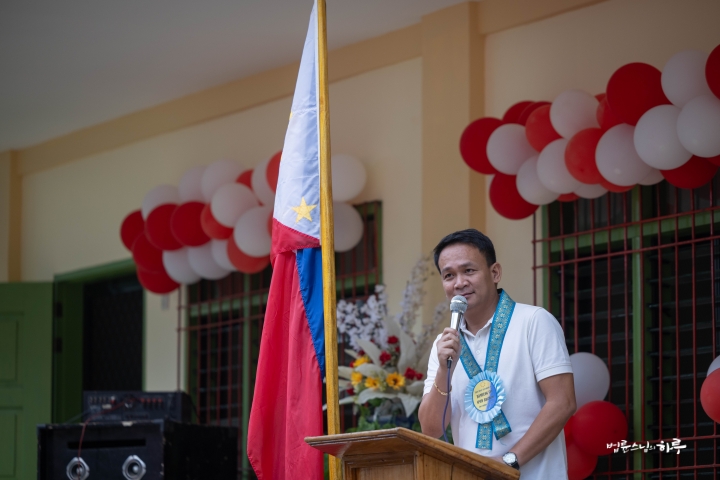
“This project is not simply about building classrooms for students with disabilities, but it’s an important starting point for raising the value of the entire community and supporting children’s dreams. Our collaboration with JTS was not just about material support, but a process of realizing dreams together.”
He particularly mentioned the over 20 years of cooperation between JTS and the local government, expressing joy that the completion of this SPED Center will provide educational opportunities to more local students.
“This is not just a school. It’s the result of love and dedication, and a space that promises a future for local students.”
Finally, the Mayor promised to assign more special education teachers to the Damulog area and to continue supporting the development of the SPED Center.
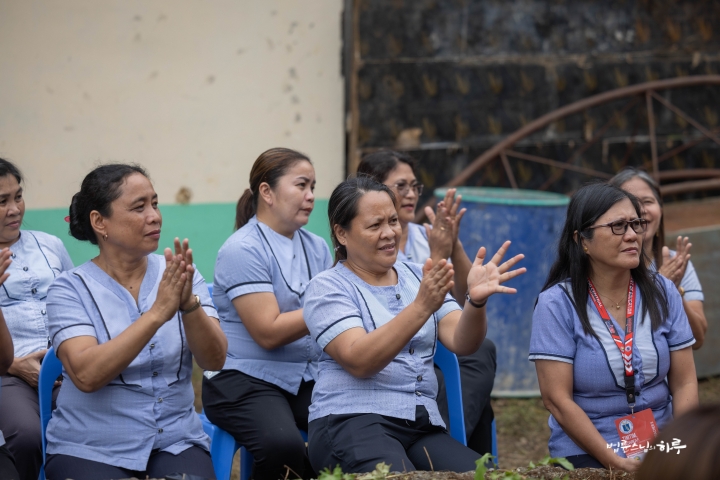
The event concluded with a commemorative tree planting and group photo session.
“Damulog!”
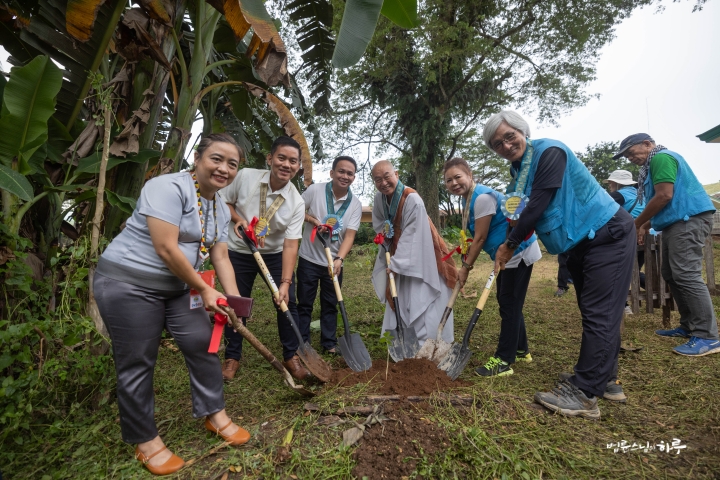
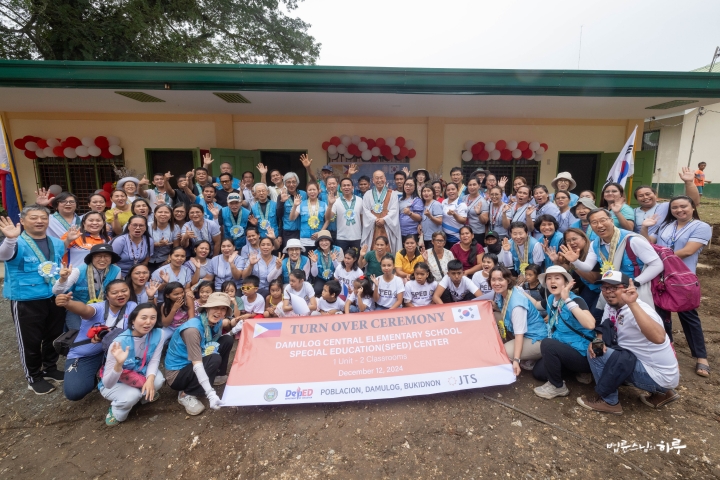
After having a meal prepared by the school, Sunim and the group returned to their accommodation by bus. The sun had completely set on the way back.
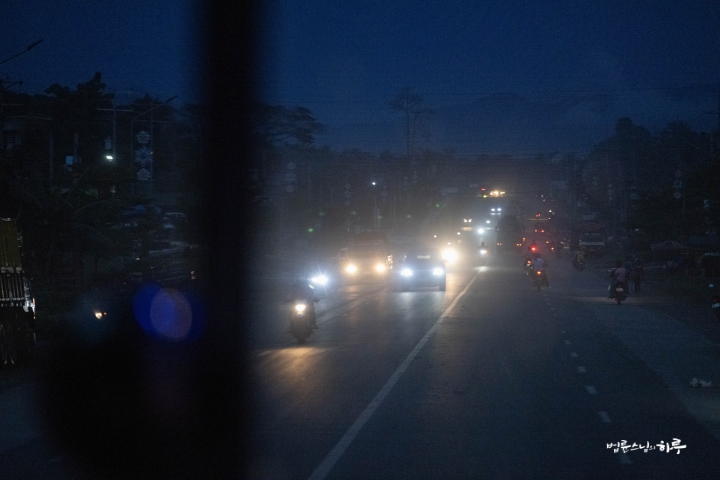
Upon arriving at the accommodation, after a light dinner, everyone gathered to share their reflections of the day’s events. The day concluded after 10 PM.

Tomorrow is the last day of the completion ceremony. In the morning, there will be a completion ceremony for Mitapul School in an indigenous area of San Fernando, and in the afternoon, a completion ceremony for Gatongon School in an indigenous area of Quezon. In the evening, there will be a live Friday Dharma Q&A broadcast.


